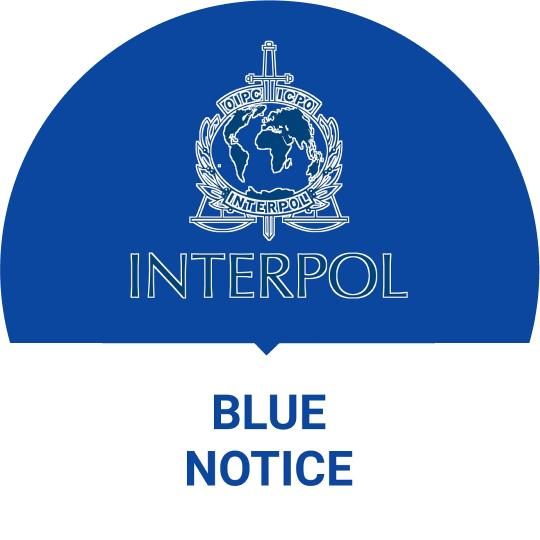The Interpol notification system is a crucial tool for international cooperation in the realm of law enforcement. The International Criminal Police Organisation, commonly known as Interpol, is an inter-governmental law enforcement organisation which assists and facilitates cooperation between national law enforcement agencies across the globe.
A Blue Notice is aimed at gathering information about the whereabouts of individuals or objects that may be linked to criminal activities. Unlike the more well-known Red Notices, a Blue Notice does not imply an arrest or detention but focuses on locating or identifying individuals.
An Interpol Blue Notices falls under the category of "notices" that Interpol issues to facilitate international cooperation in the search and identification of suspects or witnesses or critical crime related information. The primary purpose of a Blue Notice is to provide member states with the opportunity to gather information about the whereabouts, movements, or individuals and entities associated with them.
An Interpol Blue Notices are issued in instances where law enforcement agencies from one of the Interpol member countries require international assistance to locate an individual whose actions may be of interest to an investigation. It can be applied to suspects, witnesses, or individuals involved in a case as interested parties. Unlike a Red Notice, which is intended for arrest and subsequent extradition, a Blue Notice serves merely as a means of data collection and does not entail coercive measures.
The document typically contains the following information: full name, date and place of birth, nationality, identification details (passport number or other documents), as well as the reasons why this individual is of interest to law enforcement agencies. This information is shared based on the articles of the Interpol Statute and the Law on International Legal Cooperation, according to which each country is obliged to assist in such requests.
Among the objects that may be subject to a blue notice, the following are included:

The issuance of a Blue Notice begins with a member state submitting a request through its National Central Bureau of Interpol, which then forwards the request to the General Secretariat. The General Secretariat reviews and approves the request based on its compliance with the standards and rules established by the Interpol Constitution and other international agreements, such as the UN Convention against Transnational Organized Crime.
Alongside submitting a request to Interpol, a blue notice can also be initiated as part of international legal procedures through the International Criminal Court (ICC) in accordance with the Rome Statute. Articles 87-89 of the Rome Statute establish the obligation of states to cooperate with international judicial bodies, which includes requests for determining the whereabouts of witnesses or suspects.
As a rule, information about a blue notice is not made available in public sources, and individuals it is issued against may not be directly informed. However, authorities conducting the investigation can officially notify the individual through Interpol's national structures if required for further proceedings. In this case, details of the blue notice may be confidential, limiting access to information related to the notice.
Accessing information about an Interpol Blue Notice as a member of the public is not feasible, as Interpol does not make such data available to individuals. If you possess relevant details about someone or potential criminal activities that may interest law enforcement, you are encouraged to reach out to your local police department or the Interpol National Central Bureau (NCB) to report it.
For individuals who suspect they may be the subject of an Interpol Blue Notice, reaching out to local law enforcement or the Interpol NCB is the primary way to inquire about any records or relevant information. It’s essential to understand that Interpol shares its data exclusively with law enforcement agencies and does not disclose it to private or public individuals.
In summary, the most effective way to check for an Interpol Blue Notice is by contacting your local police or the Interpol NCB for guidance and support related to any potential investigations.
IInterpol's Blue and Red Notices serve fundamentally different purposes and have distinct legal implications. A Red Notice is a request for the temporary detention of an individual sought on suspicion of committing a crime, with the aim of extradition for further legal proceedings. In contrast, a Blue Notice does not imply international arrest and does not require member states to undertake any coercive actions.
Comparing two types of notifications can be considered as follows:
Removing Interpol notices is a complex process that requires legal intervention. Unlike other notifications, such as red or black, information about the blue notification is extremely limited in public sources. However, the removal procedure is possible through the appropriate legal instruments.
Since a blue notice is not always published in the public domain and can be confidential, its removal becomes a task for qualified solicitors. INTERPOL lawyers can submit a request for the notice's removal, relying on legal norms such as the Interpol Constitution and International Legal Assistance Agreements. Access to such information is limited to a select few, including solicitors and national law enforcement agencies.
To remove a blue notice, one must consult an Inteprol solicitor specialising in international criminal law and cooperation. The solicitor can file a complaint with the Interpol Commission for the Control of Files, which examines the legality and justification of notices. If the notice is found to be erroneous or in violation of an individual's rights, it can be removed based on international regulations, such as Article 2 of the Interpol Constitution, which demands respect for human rights in the conduct of international cooperation.